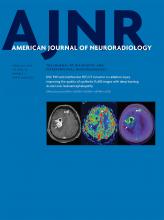In 2008, Rooks et al1 published an interesting study on the incidence of subdural hematoma (SDH) in neonates.1 Of 101 neonates examined by MR imaging, 46 developed SDH. The study also identified associations between the duration of delivery and the development of SDH and reported an increased risk of SDH associated with cases of cephalhematoma and delivery duration of >120 minutes. These are important findings with reference to the appearance and natural course of birth-related SDH.
The 43 (3 children dropped out in the follow up) children who developed birth-related SDH were followed for 2 years; 7 exhibited delayed speech by the end of follow-up. One of these children was also evaluated for an autism spectrum disorder.1 This proportion (7/43) corresponds to a prevalence of 16.3% (exact 95% CI, 6.8%–30.7%).
Rooks et al1 claimed that the findings regarding speech delay were similar to the known prevalence (not incidence) in the general population, citing a review that reported a 15% prevalence of speech delay in the preschool period.2 Although it was not explicitly stated, we believe that this figure emanates from a well-cited review by Law et al.3 This review reported study estimates of the prevalence of speech delay among 6-year-olds (excluding children with autism) ranging from 12.6% to 16.5% cited by Rooks et al.1 No studies on speech delay among 5-year-olds or younger were cited. In a more recent publication on speech and language delay in 5-year-olds or younger, the authors concluded that there is still a lack of information on the prevalence in this group.4
According to Rooks et al,1 approximately 46% (3 dropped out in the follow up) (46/101) of neonates develop SDH after birth. Even if the true prevalence of delayed speech among those without SDH were 0%, there is a prevalence of 7.5% (0.46 × 16.3%) for speech delay in the general population, which includes children both with and without SDH. Given the lack of information on the prevalence for 5-year-olds and younger, this possibility cannot be excluded.
Hence, the question is why the authors chose to compare the prevalence at 2 years of age in the group with birth-related SDH with the prevalence of historical controls from a general population of 6-year-olds. We believe it would have been more rewarding to compare the proportion of children with SDH with delayed speech with the proportion among the 55 without SDH. A follow-up of the 55 children without birth-related SDH as a control group could have shed light on the question of whether there are any sequelae to birth-related SDH. Unfortunately, the authors seem to have missed this opportunity. It is known that traumatic deliveries might result in large hemorrhages with poor prognosis.5 However, it remains unclear whether delivery-associated SDH in some instances might result in subclinical symptoms or whether it is truly asymptomatic.
References
- © 2019 by American Journal of Neuroradiology












